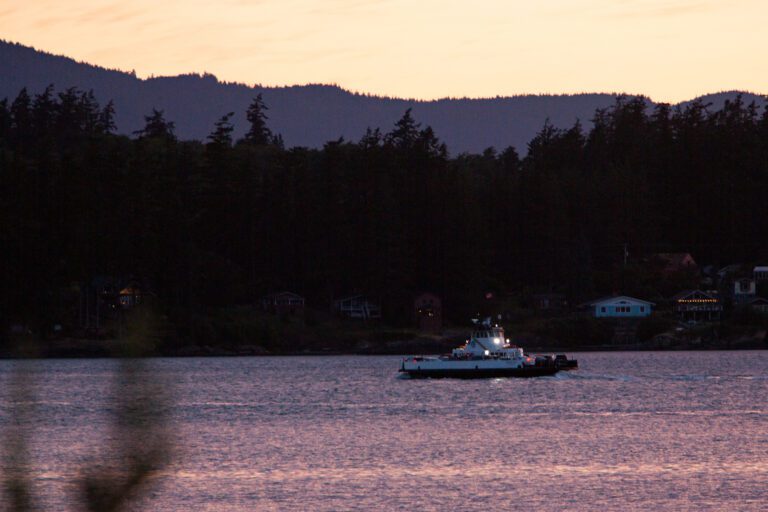After eight years of planning and restoration, the Aiston Preserve on Lummi Mountain was opened to the public on Saturday, July 15.
The preserve is a project from the Lummi Island Heritage Trust (LIHT) that transformed a former gravel mine into a 105-acre green space on Lummi Mountain.
LIHT, a nonprofit that preserves natural spaces and resources on Lummi Island, purchased the Aiston Preserve land in 2015 after the mining company that occupied the space went out of business.
The mines, which had occupied about 20 acres of the space since the 1940s, cleared out forested areas, armored shorelines (leading to deteriorated beaches), and built docks that harmed the surrounding environment.
The process of restoring the natural habitat started with loads of paperwork, studying the land and gaining funding for the project. Restoration construction began in September 2021.
One of the most satisfying days of the restoration process for Susan Hutton, executive director of LIHT, was removing all the machinery and bulky supplies that had been abandoned by the mining company.
“It just felt like it was so clear and amazing,” Hutton said. “It felt like it had been utterly transformed into a different place.”
From there, restoration continued with planting trees, restoring shorelines and integrating it all with surrounding nature.
“The goal is to create the conditions to allow the land to heal itself,” said Scott Josiah, chair of the LIHT board of directors.
Josiah planned the planting of 800 trees and shrubs in areas the mines had occupied, which took place over two days in March by dozens of volunteers from all over Whatcom County.
“I can’t tell you how many people came up to me over those two days and thanked me for allowing them to volunteer to plant trees,” Josiah said. “That’s the kind of energy that was there within that group. It was great.”
Volunteers planted 12 different types of trees in the area, including Douglas firs, bigleaf maples, Sitka spruces and more.
This diverse array of trees and shrubs not only promotes a healthy habitat for surrounding organisms, Josiah said, but allows the trust to observe which trees survive best in the sterile ground they had been planted in.
“Forests aren’t single species,” Josiah said. “They are many, many different species, all woven together and kind of a tapestry. So that’s what we’re trying to emulate.”
The mining companies had also built two docks and created an armored shoreline along the bay of Smuggler’s Cove. Armored shorelines are wall-like structures that prevent coastal erosion. While the walls are helpful for properties along the water, they deteriorate surrounding beaches and natural habitats.
LIHT removed the docks and deconstructed the shoreline armoring, replacing it with rocks that emulate other natural beaches in the area.
As visitors explore the restored area, the LIHT will keep a close eye on the land. The nonprofit is keeping track of which organisms thrive, which ones struggle and which draw new species into the area.
“We feel very much like we’re running an experiment right now,” Hutton said.
So far, most of the trees and shrubs in the restoration area have survived, Josiah said, adding it’s a good sign for the future of the newly planted forest.
Visitors are welcome at the preserve during daylight hours. There are designated trails for hiking that lead to the waterside, an overlook and more.
“The land is healing,” Hutton said. “And we’ve created a system that will enable that to happen.”




